
Castle Acre
Castle & Priory
Norfolk
England

' But my Lord , 'tis only an Acre I have acquired ! '
The pretty village of Castle Acre is outstanding in many respects. It is sited on the ancient Peddars Way, and has a Roman trackway to the North which until recently remained an important route to the north Norfolk coast. But most impressive are the Norman Castle earthworks and the beautiful ruins of the magnificent Cluniac Priory, the best preserved in the country. They were both founded soon after the Norman Conquest in 1066 by William de Warenne, first earl of Surrey and many members of this great family went on to play an important role in the affairs of the State with Kings and Queens all visiting Castle Acre as their guests.
Although now a very attractive village, Castle Acre itself was once a fortified town, it was protected by its own large bank, with a ditch and gateways to guard the entrances. The surviving so-called Bailey Gate was once the North gateway to the town, and the Medieval Parish Church of St James, which lies near to the Priory is situated outside of the town's defences, which shows the town had outgrown its defences and original boundaries by the 13th Century. When first established, Castle Acre was one of the finest examples of Norman town planning in the country, and much of this can still be seen.

The Bailey Gate at Castle Acre
The Castle which dominates Castle Acre and gives the village its name is closely linked with the fortunes of the Norman earls of Surrey. Little is known about the village before the Norman conquest. Before and after Hastings it was owned by the Bishop of Ely, Ralph de Tosny but in Domesday it is listed as being held by William de Warenne, 1st Earl of Surrey and close supporter of King William.
William de Warenne came from an established family in Normandy, his Great Uncle was Richard I, Duke of Normans who died in 996. The family home was at Varennes in Normandy and it was here he got to know the young Duke William. Warenne was a Knight at the Battle of Mortemer in 1054 and after this was given the nearby castle by Duke William. He was also one of the Lords whom William consulted over his complaints against King Harold of England and he contributed to the preparations for William's invasion of England. He fought at the Field of Hastings in 1066 alongside William and like many of those present, he was richly rewarded for his services.
After the conquest he was given the 'Rape' of Lewis, in the county of Sussex which was to remain his chief seat ( An explanation for the dividing up of the County of Sussex is given in my page on Arundel Castle also on this site. ) He immediatly set about building a castle at Lewis and helped to strengthen William's hold on the country by also adding Castles at Reigate and Castle Acre. In 1071 he fought against rebels in the Isle of Ely and is said to have had a special grudge against Hereward who is said to have slain his brother, Frederic. During the absence of the King in 1075 he was joint Justiciar with Richard de Clare and took a leading part in supressing the rebellion of the earls of Hereford and Norfolk.
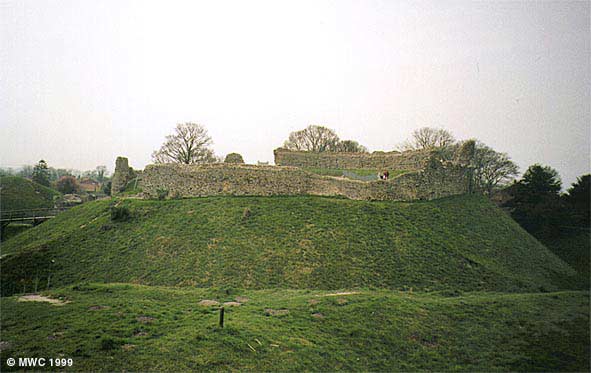
The massive earthworks and ruins of Castle Acre Castle
By Domesday William de Warenne held land in over a dozen counties and had begun to gain great wealth and influence. His name features regularly in official documents and he played a major role in helping William secure the country.
In 1077 he and his wife Gundrada paid a visit to the Burgundian Abbey of Cluny and were immediatly struck by its beauty and the religious orders there. After consulting Lanfranc he decided to set up the first Cluniac religious house in England. This work was started immediately at Lewis, in the shadow of his castle, and the Priory of St Pancreas became the first Cluniac house this side of the Channel. He also intended to go on a pilgrimage to Rome with his wife but this was cancelled due to the war between the Pope and the Emperor. His wife, Gundrada, was to die in childbirth in 1085 and this affected William greatly, always a pious man he spent more time securing the establishment of the two priories he set up in England pouring more money into their building. He was granted the earldom of Surrey in 1088 by Rufus and remained faithful during the rebellions of that year, which aided Rufus greatly with the strongholds Warenne had by now set up in Sussex, Surrey and Norfolk.
The same year, while taking part in a seige at Pevensey Castle in Sussex he was wounded in the leg by an arrow. He was carried to his Castle at Lewis where he later died on 24th June 1088, leaving his lands in England to his eldest son and his lands in Flanders to his younger son. The lands in Flanders were gained by William through marriage to his wife, Gundrada. He was buried in the Chapel at the Priory in Lewis with an epitaph given by Orderic Vitalis. His body was discovered in 1845 during excavations and was reinterred at Southover in the Borough.
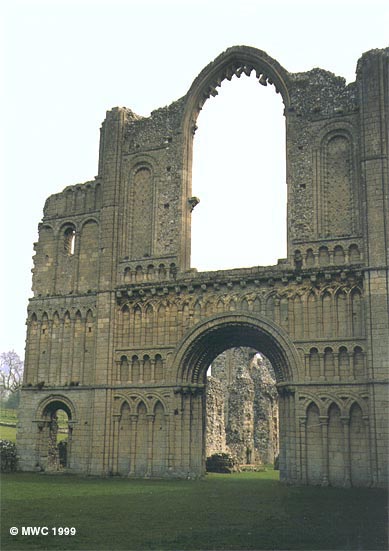 -
- 
The magnificent west front entrance to the Priory - Looking out from the Prior's House Door
William de Warenne, second earl of Surrey, succeeded his father as earl of Surrey in 1088 and immediatly set about consolidating his land and carried out his father's wishes. He continued with the vast building programmes his father had set up, especially at Castle Acre Priory, which had by now had its foundations built and had been accepted by Cluny as a dependent of Lewis Priory. He also added a further grant of land to Castle Acre Priory, consisting of;
' Two orchards and all the cultivated land from the orchards to my Castle '
William de Warenne was a bit of an upwardly mobile knight in his day. In 1091 he was helping Hugh of Grantmesnil to defend Courcy against Robert de Belleme, son of Hugh de Montgomery, the conqueror's great friend and Earl of Arundel. Between 1093 - 1094 he sought to marry Matilda, daughter of Henry I and then Edith, daughter of Malcom III, King of the Scots. Edith then married Henry I and this must have been at the bottom of his hatred for Henry. He often mocked the King's love of hunting and called him 'Hart's foot'. This hatred spilled over with his open support of Robert, the Conqueror's other son, whom he met on landing in England. He was immediatly disinherited by Henry I, and accompanied Robert back to Normandy. He returned to England to make his peace with King Henry in 1103, he was pardoned by Henry and from then on became the King's most faithful and trusted friend.
He fought with the King at Tinchebray in 1106 and commanded the 3rd Division of the King's Army. He also fought with Henry again at the Battle of Bremule or Brenneville on 20th August 1119 and was said to have encouraged the King to take a more personal role in the combat. He remained loyal to the end and was beside King Henry at his death at the Castle of Lions in 1135. After, he was appointed govenor of Rouen and the district of Caux but in 1138 he died and was buried alongside his father in the Chapter House at Lewis Priory.
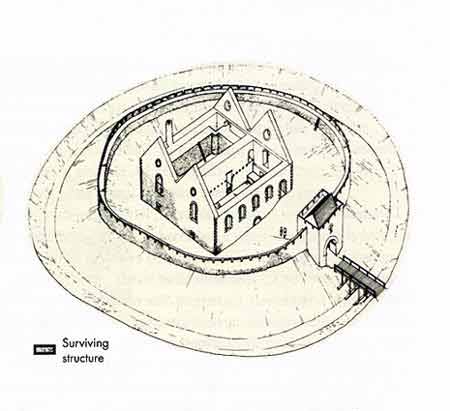 -
- 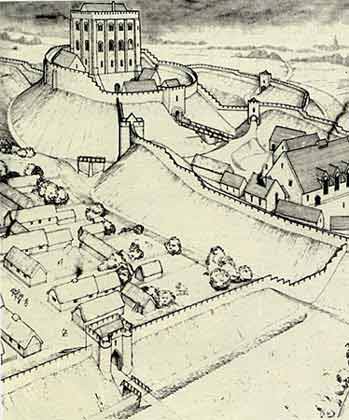
Reconstruction drawing of the fortified manor - The later keep and town of Castle Acre - by Richard Warmington
By this time the building work on Castle Acre Priory was almost finished and the Earl's Castle was by now complete. The Castle was not really a Castle as such at this time, more a fortified manor with a stone built building surrounded by a wall, large ditch and entrance gatehouse. It is thought that the 3rd earl, another William, was responsible for converting the manor to the more familiar Castle Keep, much favoured by the Normans. This work was done at the time of the civil wars of King Stephen around 1140 so it is most probable it was strengthened during this time of instability.
The Priory continued to gain land and buildings from various benefactors as well as the de Warenne family which enabled it to prosper and become very wealthy. Royal support also came from Henry I and Henry II, who granted the Priory freedom from tolls, which was a valuable concession for a house with such extensive estates. This also meant that the house had to endure the expense of Royal visits and in January 1296, Edward I and Queen Eleanor spent several weeks at the Priory.
William de Warenne, 3rd earl of Surrey was as active in state affairs as his father and Grandfather before him and was as loyal as they were to his King. He supported King Stephen throughout the civil wars between the Barons, and took a prominent part in keeping the Bigod Earl of Norfolk in check, who is featured heavily in my site on Framlingham Castle. He was with Stephen at the Battle of Lincoln in 1141 and after his capture remained loyal to the Queen when Matilda pressed her claim, even following her in pursuit as she retreated from Winchester.
In 1146 he took the cross with Louis VII at Vezelai and travelled with the Army of the 2nd Crusade which set out in 1147. In the march from Laodicea in January 1148 he was helping to guard the rear when they became cut off from the main party by the Turks. He was either killed on the spot or as some believe, he was carted off and placed in captivity where he soon died. His death is dated in the register of Lewis Priory as 13th January 1148. He left no sons, but a daughter, Isabella.
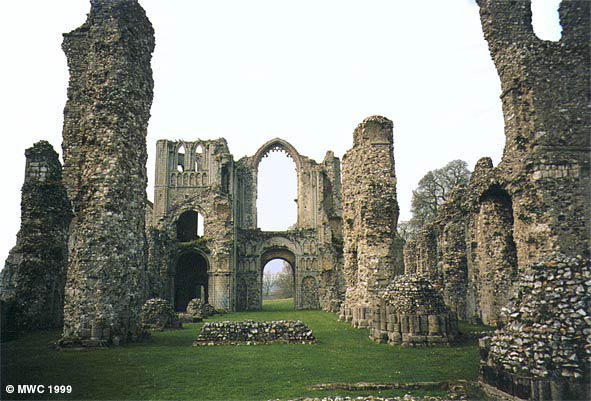
The Nave of the Priory Church still retains some of it's 12th C decoration
A wealthy heiress such as Isabella de Warenne didn't remain single for long in the Middle ages and she was soon married off to William of Blois, a younger son of King Stephen. He died in 1159, and in 1163 she married the half brother of King Henry II, Hamelin Plantagenet who's most remembered achievement was the building of Conisbrough Castle in Yorkshire. He held the title of earl of Surrey until his death in 1202. They had a son, another William, who inherited the title of 6th earl of Warenne or Surrey. He held the lands at Castle Acre and spent much time on his estate until his death in 1240. Henry III is recorded as visiting him as a guest several times, probably while on a pilgrimage at nearby Walsingham.
To the end of the direct line in 1347, the Warenne earls continued to play a prominant role in state affairs, they spent less and less time at their esatate in Castle Acre and more in the saddle supporting their King. John, the 7th earl de Warenne was also close to King Henry III and also his son, King Edward I. He fought for Henry at Lewis in 1264 against the Barons and again at Evesham in 1265. He joined Edward's invasion of Scotland in 1296 and was made Warden of the country between 1296-97. He was part of the English Army which was routed by William Wallace in 1297 at Stirling Bridge, but the following year he was helping Edward defeat Wallace at Falkirk.
He died in 1304 and was succeeded by his Grandson, another John, 8th earl of Surrey. John de Warenne joined Edward II's Army in Scotland, but in 1312 he rebelled with other Barons and captured the King's favourite, Piers Gaveston, at Knaresborough who was later executed. Edward II pardoned him but later in 1316 he was excommunicated by the Pope for Adultery and openly maintaining a mistress, Matilda de Nerford, by whom he had several children. He gave the town of Castle Acre to the Earl of Pembroke and on his death it was returned to the family by the way of Richard Fitzalan, earl of Arundel who is also featured on my site of Arundel Castle, also on this web-site.
The Castle's decline seems to have begun under the last Warenne earl, who's military exploits left him no time for his Norfolk estates. It passed through many owners, falling into ruin until it was obtained in 1615 by Sir Edward Coke, the famous chief Justice. He assured King James, with the immortal words at the top of this page, after the King was anxious about the growing size of Cokes estates. ' But my Lord , 'tis only an Acre I have acquired ! ' Coke spent £60 repairing the ruins of the Castle, one of the earliest records of conservation work by a private individual. The castle remains the property of his decendants and since 1984 it has been looked after by English Heritage.

Stonework from the Priory Church
In contrast to the Castle, the Priory fared better for a while longer. 32 Monks are recorded as being at Castle Acre in 1276 and 35 in 1279. By 1294 the numbers had steadily begun to decline as a result of a sheep epidemic which the Priory had large flocks of, this affected their income drastically. The Prior of Lewis was instructed to put matters right and restore the numbers, this was done but they began to decline again at the time of the Black Death. In 1350 the numbers had fallen to 20 and like many other Monastic houses they never fully recovered. In 1351, King Edward III instructed his Sergent-at Arms to arrest those Monks of Castle Acre who had ;
' Spurned the habit of their Order and were vagabonds in England in secular habit '
This was not a problem particular to Castle Acre, similar events are recorded at Thetford and Pritwell.

The Prior's House at Castle Acre
In 1390 their numbers had risen to 26 and were maintained until 1500. When the Priory was supressed in 1537 the Pension list records 10 Monks and the Prior, suggesting some had already been transferred to other Cluniac houses.
Castle Acre as a subordinate house of Lewis had it's Priors chosen by the Prior of Lewis as agent of the Abbot of Cluny. This situation worked well at castle Acre until 1259 when the General Chapter of Cluny ordered the Prior of Lewis to punish the Prior of Castle Acre for failing to attend the Order's annual chapter meeting at Cluny and sending his apologies. But more seriously for using the Prior's seal for the benefit of laymen.
In 1283, William of Shoreham, Prior of Castle Acre, fortified his house against the Prior of Lewis with the help of the earl of Surrey, John de Warenne. The earl had appointed him Prior with the approval of the community, even though he had no right whatsoever to do so. The Abbot of Cluny wrote to de Warenne asking him to remove Shoreham from the post and agree to the rights of the order.
 -
- 
The Prior's private room and Chapel
Through much of the 14th century the Priory had problems with the crown over being owned by an alien nation whom the crown was at war with. Through much of the three Edward's rule they had to pay heavily to maintain their links with their mother Abbey in Cluny. It was not until 1373 that they were eventually considered ' denizen and not alien '
The life of the Priory was trouble free until the supression of the Priory on 22 November 1537. Within a month it was under the control of the Duke of Norfolk who had to pay the Prior and remaining 10 Monks pensions. He retained the Castle and Priory until 1559 when it was sold to several people until Sir Edward Cokes eventully purchased his infamous 'Acre' in 1615.
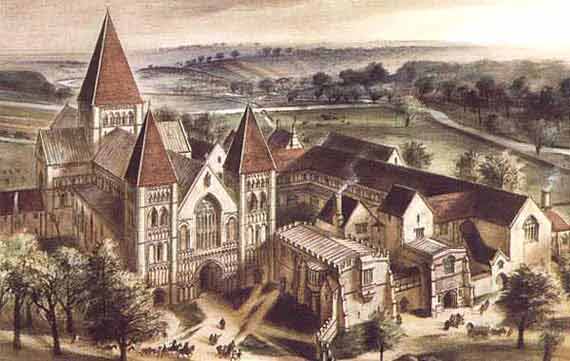
A reconstruction of the Priory as it looked before the supression in 1537 - By Alan Sorrell
Castle Acre Priory is now in the care of the nation and is managed by English Heritage.
© MWC 1999
![]()
Additional Information on Castle Acre
Castle Acre Castle and Priory are managed by English Heritage.
Open - Castle Acre Castle - any reasonable time and is free.
Open - Castle Acre Priory - 1st April - 1st November, Daily, 10am-6pm,
2nd November - 31st March, Wed-Sun, 10am-4pm, Closed 24th-26th December.
Entry - Castle Acre Priory, £2-95 / £2-20 / £1-50.
Telephone - 01760-755394.
OS Map - No 132; ref TF814148
Castle Acre Castle and Priory
The small village of Castle Acre is 5 miles to the North of Swaffham near the beautiful north Norfolk coast.. The village itself has obviously changed dramatically since the Middle ages, but there are tell-tail signs throughout of its ancient pedigree. A typical English village, it seems to fit perfectly with these two beautiful monuments and the countryside sourrounding it. The village green has a couple of fine restaurents to its side which make for a perfect spot for lunch or afternoon tea where you can watch the world go by. It is full of charm.
At the begining of this page I described the earthworks of the Castle remains as massive, that's exactly what they are, from the small car park to the side of the castle, the whole site slowly unfolds itself to the visitor and it soon becomes clear that this was a maze of huge earthworks put up for serious defence. The only place I can think of to compare it with are the massive mounds found at Old Sarum, near Salisbury, very impressive. There is enough of the stonework surviving to give the visitor a good idea of how it must have looked.
Access for people with disabilities is rather limited but not impossible, there are walkways with some bridges erected over some of the earthworks. Dogs are permitted but should be kept on a lead at all times. Access to the Castle site is free, which is always a good thing, and children can run about to their hearts content, but great care should be taken around some of the defensive mounds, a fall could not be stopped, they are very steep.
The Priory itself is situated at the opposite end of town and is served by its own car park. Parking is very limited in the village itself so its best to use the Priory Car park and walk the short distance. The Priory is served by a small shop where entry fees are paid and a headset tour is available. I always recommend to use these, they are part of your admission fee and can be very informative, as well as guiding you around the place. Before you go out to the Priory there is an exibition on life at the Abbey in a small display with an excellent model showing how the Priory looked in its prime.
This place is wonderful, the remains have some fine stonework still surviving and the west front rises almost to its original height. The prior's house is splendid and gives a good idea how the Prior must have lived, it is in excellent condition along with his huge fireplaces in almost every room, there's even one in his Private Chapel.
I had another site to visit the day I went to Castle Acre, but I never got there. I spent a long time enjoying this lovely village and taking in its weath of history that I had no time for anywhere else. There are also a few lovely Churches locally which have some Stone effigies and Brasses, if anyone wants information on them mail me and I'll send you a list. Another site I can recommend nearby is Castle Rising, also owned by English Heritage and also featured on this web site.
© MWC 1999
![]()
Information on Castle Acre Castle and Priory was obtained from:
Castle Acre Castle - Jonathan Coad.
Castle Acre Priory - Glyn Coppack.
The Abbeys and Priories of Medieval England - Colin Platt.
The Castle in Medieval England and Wales - Colin Platt.
England and It's Rulers - M.T. Clanchy.
The Knight in Medieval England - Peter Coss.
William Rufus - Frank Barlow.
The Oxford Dictionary of National Biography - George Smith.
The Domesday Book - Thomas Hinde.
Plantaginet Encyclopedia - Elizabeth Hallam.
Chronicles of the Age of Chivalry - Elizabeth Hallem.
Medieval England, Rural Society and Economic change - Edward Miller & John Hatcher.
Sussex - Barbara Willard.
The English Heritage Handbook 1999.
The Readers Digest Touring Guide to Britain.
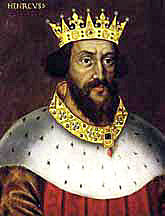 -
- 
![]()
All pictures marked and text on this page are copyright to the owner
and must not be reproduced in any format without permission

Another Castles Abbeys and Medieval Buildings Site Feature
![]()